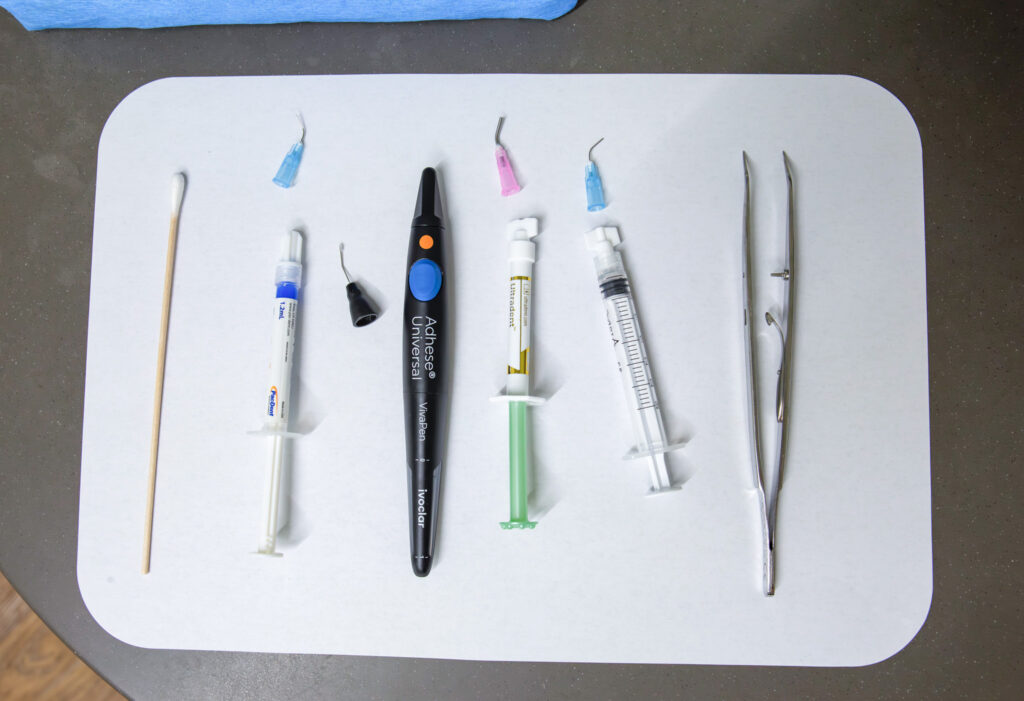Metal Free Tooth-Colored Fillings
The concept of a “filling” involves replacing and restoring tooth structure that is damaged due to decay or fracture with a suitable material. Dr. Sander replaces old, broken-down amalgam/metal fillings, which may contain traces of mercury, with white fillings (composites) to restore your smile and give your teeth a more natural look and feel.
Thanks to advancements in dental materials, you no longer have to endure the embarrassment of unsightly silver/mercury fillings or metal margins. New-age, state-of-the-art tooth-colored resin or porcelain materials can eliminate the dark, black appearance in your teeth. Composite bonding is a common solution for:
- Fixing or repairing chipped or cracked teeth
- Reducing unsightly gaps or spaces between teeth
- Hiding discoloration or faded areas on the tooth’s surface
Composite bonding is often used to improve the appearance of your teeth and enhance your smile. As the name suggests, composite material—either a plastic or resin—is bonded to an existing tooth. Unlike veneers or crowns, composite bonding removes little, if any, of the original tooth structure.

Advantages of composite bonding include:
- It is a quick process, typically lasting less than one hour.
- It does not reduce the tooth’s original structure and is relatively inexpensive.
- Composite resins come in many different shades, allowing for better matching to the natural color of your teeth.
However, composite bonds may not be as durable and long-lasting as veneers and crowns, and they may need to be retouched or replaced in the future. Additionally, composites can stain more easily, so proper care and regular hygiene services are essential. To ensure the longest possible duration of the bonding, it’s important to brush and floss daily. Common staining elements include coffee, tea, tobacco, and certain foods and candies.

